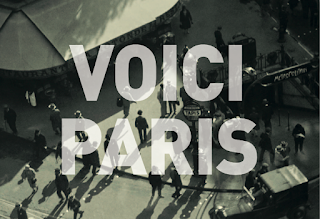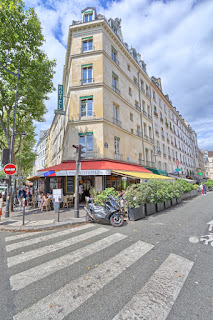"Voici Paris" au Centre Pompidou
Plus qu'une présentation de photographies successives, "Voici Paris" dévoile la période toute particulière de l'entre deux-guerres. Alors que le sujet montre un Paris libre et travailleur, la photographie connaît un vrai bouleversement artistique. Au delà du modèle, l'intérêt du photographe est en migration. La société évolue et l'art en profite pour divaguer. Les photographes se plaisent à innover, tester, pousser les limites. Ils flirtent avec la société pour mieux l'utiliser. Ils accompagnent le changement, influencent le modernisme. De nombreux photographes participent à cette mouvance. Il faut dire qu'à cette période, des artistes venant de très loin s'installent à Paris. Ainsi Man Ray, Germaine Krull ou encore Bressaï travaillent aux côtés de photographes français tels que Cartier-Bresson ou Jean Moral.
Au lendemain de la première guerre mondiale, la société cherche des réponses. Il faut rebondir, se reconstruire. Quelle politique pour demain? Les photographes assistent à ces débuts délicats et incertains. Leur travail est le témoignage de la volonté et du courage. Paris renaît en photo. L'heure est à l'industrialisation. La matière est donnée à l'inspiration. Les artistes voient dans le fer, les cheminées et les ouvriers, de nouveaux modèles, une nouvelle ère artistique. L'après-guerre donne le sourire, les parisiens sortent. La vie nocturne bat son plein. La ville se développe. "Voici Paris" nous rend spectateur de cette mutation.
L'exposition s’intéresse également aux photographes ayant revisité les classiques de la peinture. Sont ainsi exposés nus, portraits, natures mortes, ...
"Voici Paris" nous convie à Paris, période de l'entre deux-guerres, au coeur d'une ville blessée et vindicative. Trente années marquées par la course à la modernité. Trente années durant lesquelles la photographie n'a cessé de créer et d'avancer, tout en conservant son rôle de témoin du passé.
Séjourner à Paris
Séjourner à Paris
*****
In 2011, the Centre Pompidou made a sensational acquisition: the photographic collection of Christian Bouqueret. An artistic and cultural treasure consisting of 300 photographs, that the museum wanted to share with the exhibition "Voici Paris".
More than a presentation of several photographs, "Voici Paris" reveals the particular period between the two world wars. While the subject shows a free Parisian worker , photography is living a true artistic revolution. Beyond the model, the photographer's interest is in migration. Society is changing, and art too. Photographers are fond of innovation, they test and push the limits. They flirt with society to better use it. They assist changes, influence modernism. Many photographers are involved in this movement. At that time, artists from far away, settle in Paris. And Man Ray, Germaine Krull or Bressaï, work alongside French photographers such as Cartier-Bresson and Jean Moral.
In the aftermath of the First World War, the society is looking for answers. It has to rebound, to rebuild. Photographers attend those difficult and uncertain beginnings. Their work is a testament to will and courage. Paris is reborn in photo. It is time to industrialization which gives inspiration. Iron, fireplaces and workers become new models, it is a new era of art. The post-war gives smile again, Parisians go out at night. The nightlife is in full swing. The city is developping. "Voici Paris" makes us spectators of this mutation.
The exhibition also focuses on photographers who revisited the classic painting with nudes, portraits, still lifes, ...
"Voici Paris" invites us to Paris, in the period between the two world wars, in the heart of a hurt and vindictive city. Thirty years marked by the race to modernity. Thirty years in which photography has continued to create and move forward, while maintaining its role as witness to the past.
Staying in Saint-Germain Des Près







